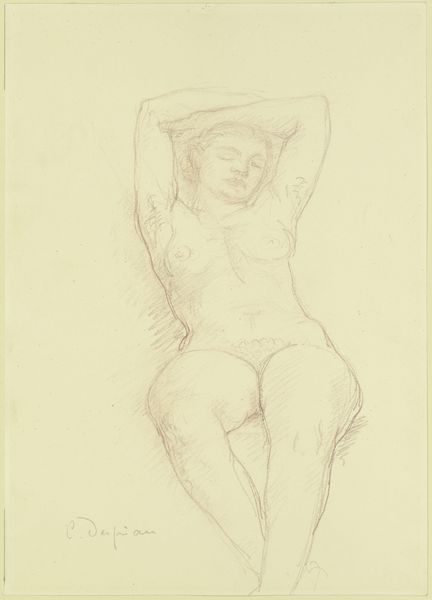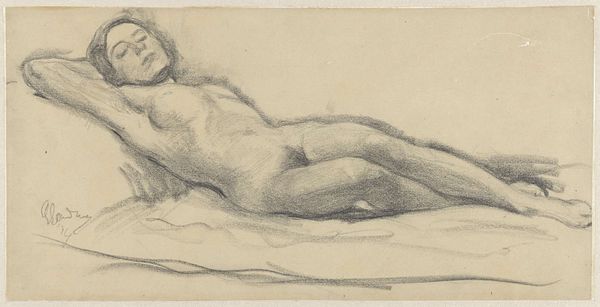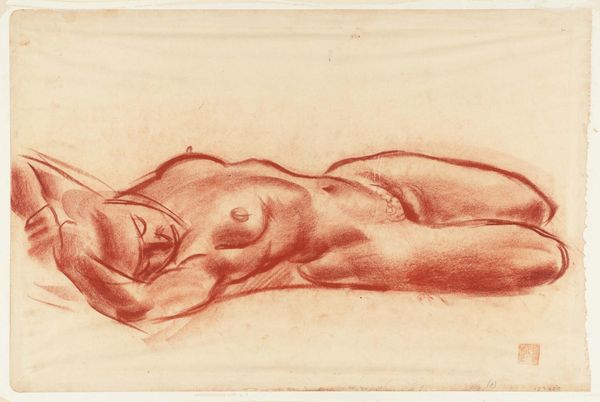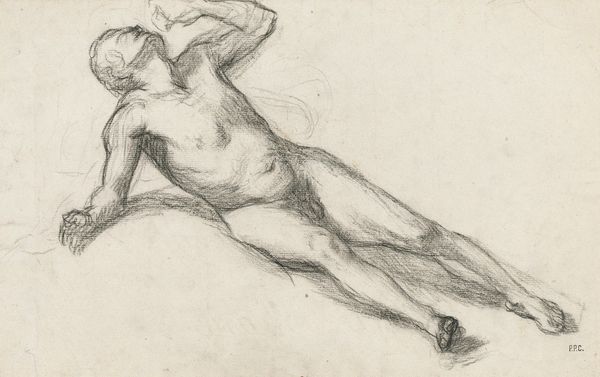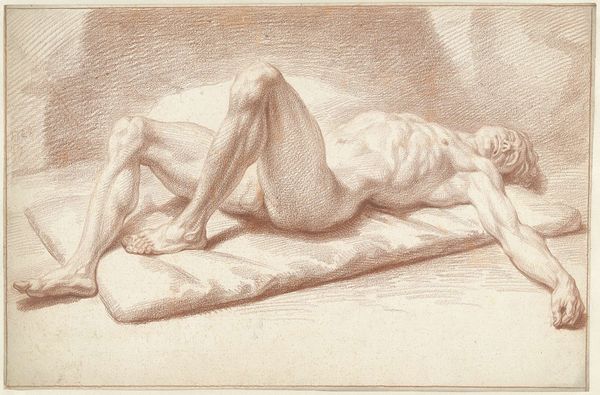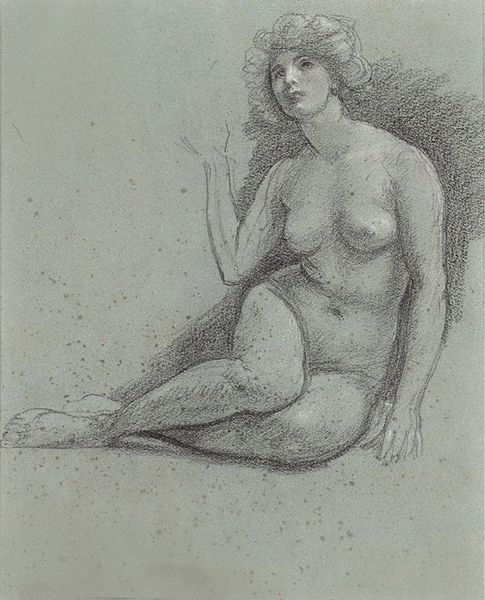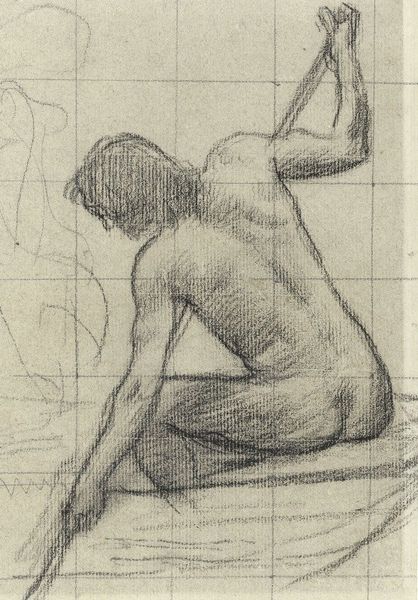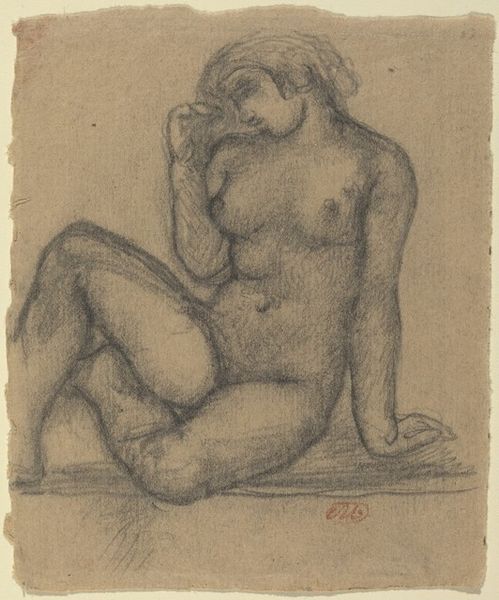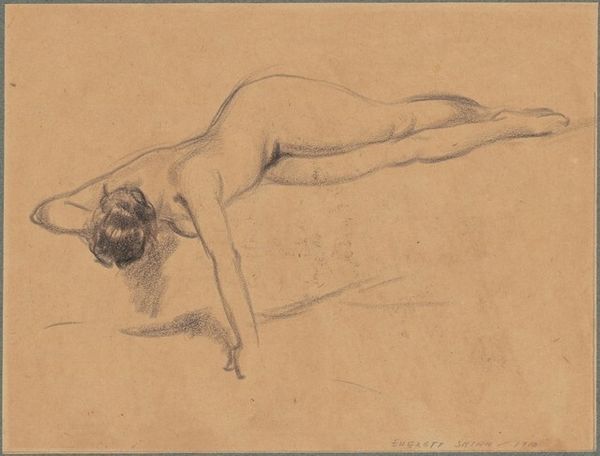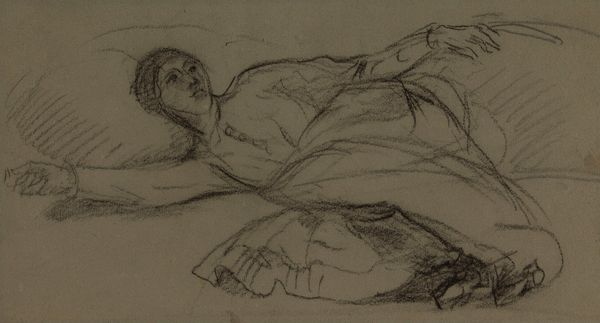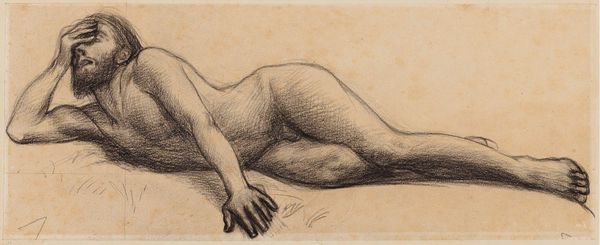
drawing, dry-media, charcoal
#
drawing
#
charcoal drawing
#
figuration
#
dry-media
#
pencil drawing
#
charcoal
#
academic-art
#
nude
#
realism
Copyright: Public Domain: Artvee
Editor: Pierre Puvis de Chavannes's "Femme nue allongée," created in 1879 using charcoal, presents a reclining nude figure. There's something incredibly vulnerable and almost melancholic about her posture. What strikes you most when you look at it? Curator: It's interesting you pick up on the vulnerability. This piece, situated within the academic tradition of its time, invites us to consider how women were being represented, or rather, *constructed,* for the male gaze. It makes me think about the power dynamics inherent in art production, specifically how the male artist often dictated the terms of female representation. Editor: So, you’re saying this isn't just a simple nude study? Curator: Exactly. Who benefits from this image, and what ideological work is it doing? Are we invited to admire beauty, or something else? Consider the context: late 19th century France, a society grappling with burgeoning feminist movements and evolving notions of female identity. How might this image be participating in—or pushing back against—these broader social changes? What do you think about the grid marks beneath the drawing itself? Editor: They show the artist’s process of measuring out proportions and scaling up from a smaller design perhaps, a typical element of academic studies? Curator: Yes, they demonstrate a technique but what does the technique create? Does the grid further objectify her or do they reveal that bodies and power can be scientifically “mapped” for visual capture? Editor: It gives a sense of objectivity that might actually remove something of the subject's humanity… Wow. I hadn't considered that perspective before! Curator: Right. By engaging with questions of power, gender, and representation, we can reveal deeper truths about the art object itself. The piece acts as an invitation to start conversations about larger sociohistorical and cultural frameworks, about who had agency when creating the work. Editor: I will never see nudes the same way!
Comments
No comments
Be the first to comment and join the conversation on the ultimate creative platform.

